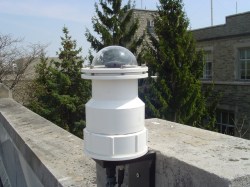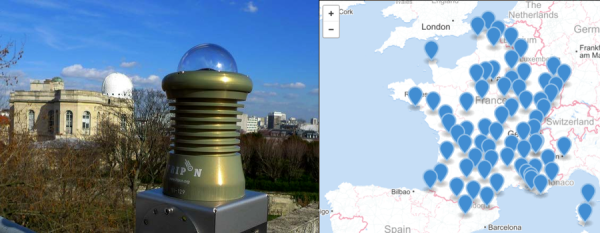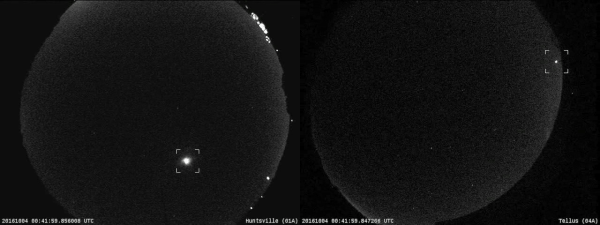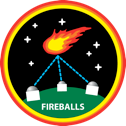It may be midwinter in Perth, but people still go to the beach there, which led to the surprising discovery earlier this week of what appears to be a large hunk of space debris. Local authorities quickly responded to reports of a barnacle-encrusted 2.5-m by 3-m tank-like object on the beach. The object, which has clearly seen better days, was described as being made of metal and a “wood-like material,” which on casual inspection is clearly a composite material like Kevlar fibers in some sort of resin. Local fire officials teamed up with forensic chemists to analyze the object for contamination; finding none, West Australia police cordoned off the device to keep the curious at bay. In an apparently acute case of not knowing how the Internet works, they also “urge[d] everyone to refrain from drawing conclusions” online, which of course sent the virtual sleuths into overdrive. An r/whatisthisthing thread makes a good case for it being part of the remains of the third stage of an Indian Polar Satellite Launch Vehicle (PSLV); reentry of these boosters is generally targeted at the East Indian Ocean for safe disposal, but wind and weather seem to have brought this artifact back from the depths.
meteoroid4 Articles
Fantastic Micrometeorites And Where To Find Them
Space is very much the final frontier for humanity, at least as far as our current understanding of the universe takes us. Only a handful of countries and corporations on Earth have the hardware to readily get there, and even fewer are capable of reaching orbit. For these reasons, working in this field can seem out of reach for many. Nevertheless, there’s plenty about the great expanse beyond our atmosphere that can be studied by the dedicated citizen scientist. With the right equipment and know-how, it’s even possible to capture and study micrometeorites yourself!

For those new to the field, the terms used can be confusing. Meteoroids are small metallic or rocky objects found in outer space, up to around 1 meter in size. When these burn up upon entering the atmosphere, they are referred to as a meteor, or colloquially known as a shooting star. If part of the object survives long enough to hit the ground, this is referred to as a meteorite, and as you’d expect the smaller ones are called micrometeorites, being on the scale of 2mm or less.
Stardust Proves Hard To Find
Being tiny and having fallen from space, micrometeorites present certain challenges to those who wish to find and identify them. In spite of this, they can be found by using the right techniques and a heck of a lot of hard work.
Continue reading “Fantastic Micrometeorites And Where To Find Them”
Fripon Is French For Meteorite Hunting
Just a few weeks ago, we reported on a US NASA project to track the path and estimate the size of meteoroids in the sky using a distributed network of a handful of cameras. It turns out that there’s a similar French effort, and it’s even cooler: the Fireball Recovery and InterPlanetary Observation Network (FRIPON). (The name is cute, if the acronym is contrived: a “fripon” is a trickster in French.)
NASA Knows Where The Meteors Are
NASA has been tracking bright meteoroids (“fireballs”) using a distributed network of video cameras pointed upwards. And while we usually think of NASA in the context of multi-bazillion dollar rocket ships, but this operation is clearly shoe-string. This is a hack worthy of Hackaday.
The basic idea is that with many wide-angle video cameras capturing the night sky, and a little bit of image processing, identifying meteoroids in the night sky should be fairly easy. When enough cameras capture the same meteoroid, one can use triangulation to back out the path of the meteoroid in 3D, estimate its mass, and more. It’s surprising how many there are to see on any given night.
You can watch the videos of a meteoroid event from any camera, watch the cameras live, and even download the meteoroid’s orbital parameters. We’re bookmarking this website for the next big meteor shower.
 The work is apparently based on [Rob Weryk]’s ASGARD system, for which the code is unfortunately unavailable. But it shouldn’t be all that hard to hack something together with a single-board computer, camera, and OpenCV. NASA’s project is limited to the US so far, but we wonder how much more data could be collected with a network of cameras all over the globe. So which ones of you are going to take up our challenge? Build your own version and let us know about it!
The work is apparently based on [Rob Weryk]’s ASGARD system, for which the code is unfortunately unavailable. But it shouldn’t be all that hard to hack something together with a single-board computer, camera, and OpenCV. NASA’s project is limited to the US so far, but we wonder how much more data could be collected with a network of cameras all over the globe. So which ones of you are going to take up our challenge? Build your own version and let us know about it!
Between this project and the Radio Meteor Zoo, we’re surprised at how much public information there is out there about the rocky balls of fire that rain down on us every night, and will eventually be responsible for our extinction. At least we can be sure we’ll get it on film.
















